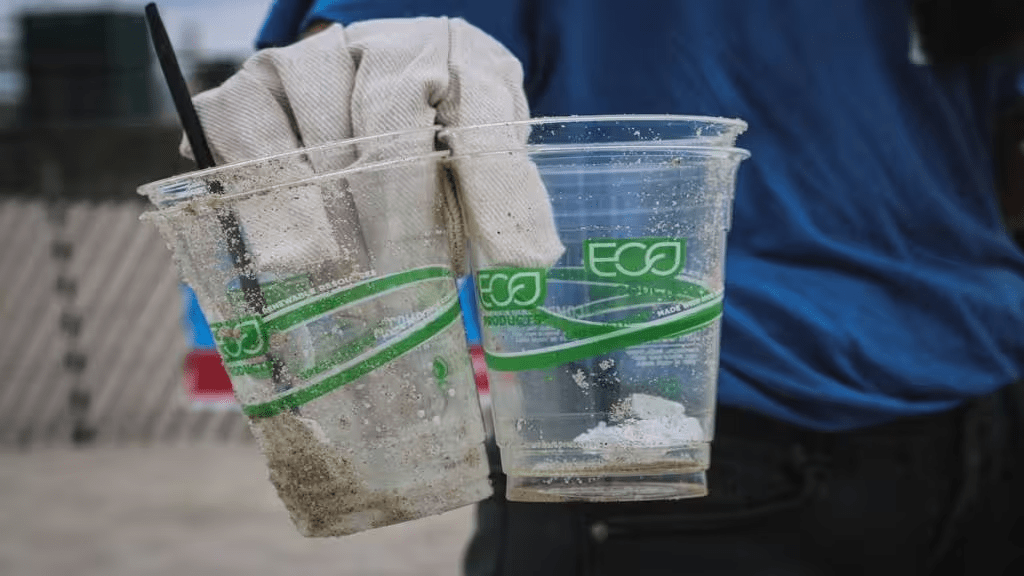In Short : Greenwashing poses a significant threat, misleading consumers and undermining authentic sustainability. In 2024, identify it through vague claims, absence of certifications, inconsistencies, unsubstantiated numbers, and an overemphasis on a single aspect, emphasizing the importance of vigilance in distinguishing genuine sustainability initiatives.
In Detail : During Covid, everyone felt firsthand the effects of climate change. The proof was irrefutable, with clear blue skies, the lowest AQI, marine life resurrection and so on. In the post-Covid era, the demand for eco-friendly products naturally went up.
It began somewhere in 2018, on my weekly travels to an offbeat town in India.
I started spotting small hotels using the term ‘eco’ very frequently. At first, I felt that ‘eco’ signified ‘economy’ but then found out that it actually meant ‘eco-friendly’ – a term used by these hoteliers without much knowledge on what it stood for. Since 2020, the trend has only increased – with brands across fashion, beauty, FMCG and manufacturing using the term quite loosely, and adding words like biodegradable, green, environment friendly and so on.
And so came about the genesis of the term ‘Greenwashing’ – when companies or brands use marketing tools to promote a sense of environmental impact without it being so. It was coined by Environmentalist Jay Westerveld citing the irony of the “save the towel” movement in hotels that had little impact beyond saving hotels money in laundry costs.
Why do it at all?
During Covid, everyone felt firsthand the effects of climate change. The proof was irrefutable, with clear blue skies, the lowest AQI, marine life resurrection and so on. In the post-Covid era, the demand for eco-friendly products naturally went up, and companies felt that sustainability was the perfect peg to draw in the new ‘conscious’ consumer.
So why is that so dangerous?
The science is pretty clear – to restrict climate temperatures to 2 degrees Celsius, companies need to adopt sustainable practices. Greenwashing does the exact opposite – it gives vague or false claims about environmental measures without proof and draws consumers into buying more of the same. And with policymakers pushing companies to disclose their carbon emissions, greenwashing is going to get even worse.
Here are some of the ways to spot greenwashing and buy sustainable in 2024.
1. Check certifications – It’s better to put your faith in third-party auditors, so look for certifications like PETA (against animal cruelty), Fairtrade (farmers rights), ISO 14001 (environmental standards) and so on.
a. The Rule: Remember, that each certificate awarded is for one goal only (like Peta only covers animal cruelty) and there is no comprehensive certificate that will encompass all the sustainable development goals defined by the United Nations.
2. Check company claims – Most of those using greenwashing will make very vague claims like ‘this is 100% natural’ whereas the ones who actually use natural ingredients will disclose a full list of raw materials and back up their claims with studies and reports to showcase its impact.
a. The Rule: The more granular the data, the more believable the claims.
3. Find the Science – Climate mitigation is essentially a science, so look for the science behind the claim. For example – ‘this product is made from organic cotton’ – why is organic cotton environmentally better than normal cotton? Does it use less water?
a. The Rule: Every activity that is undertaken by a company to reduce carbon emissions will be backed by a certain science. And it’s all on Google!
4. Customer is King – If a brand is truly green, you can expect people to talk about it, activists to be drawn to it and there will be many reviews of all stakeholders like customers, investors, shareholders etc glaringly apparent in the public domain. Since there is a new segment ‘the conscious consumer’, there are also new social media platforms, influencers and consumer forums that highlight the sustainability efforts of brands.
a. The Rule: It will be tough to defend green claims for a long period in the public domain. If there is hype, it will be real.
5. Product-based sustainability ratings – Wouldn’t life just be a peach if we knew the environmental impact of all products and services that we consumed and how they stack up against industry averages? Welcome to the world of product-level sustainability ratings or ESG ratings. These third-party auditors not only verify green claims but also show how eco-friendly brands stack up against industry averages, by providing a numerical score on a particular scale.
a. The Rule: The higher the rating, the safer your purchase decisions for Mother Earth!
As you can see, there are many things consumers like us can do to ensure that we buy only the most sustainable products in 2024. But we have to take onus. We have to be aware, to read up, to understand that sustainability is a complex science. And to recognize that to be truly sustainable, much innovation and expenditure is needed.
So, I’d always prefer a company that works on changing one part (materials, process, logistics, packaging, energy, waste etc.) than to claim that they are broadly ‘eco-friendly’ or ‘green’.

